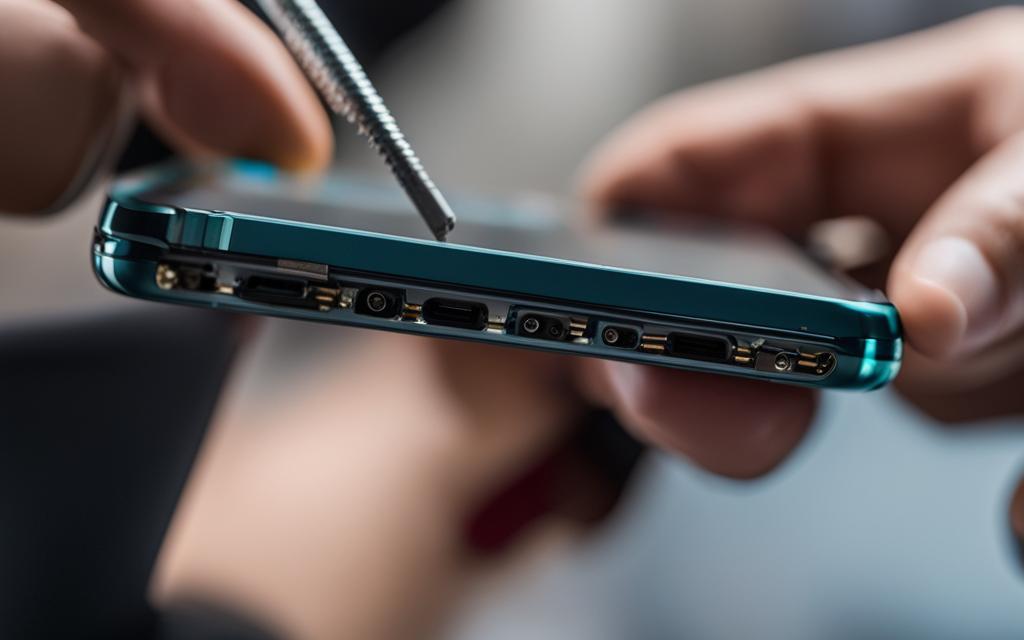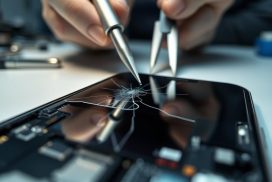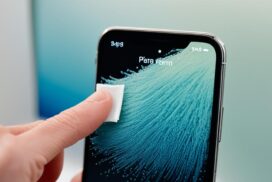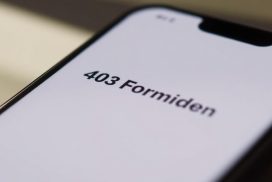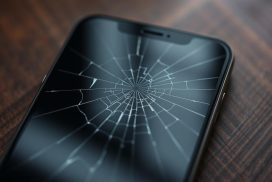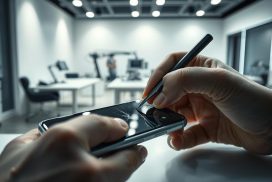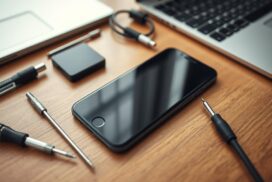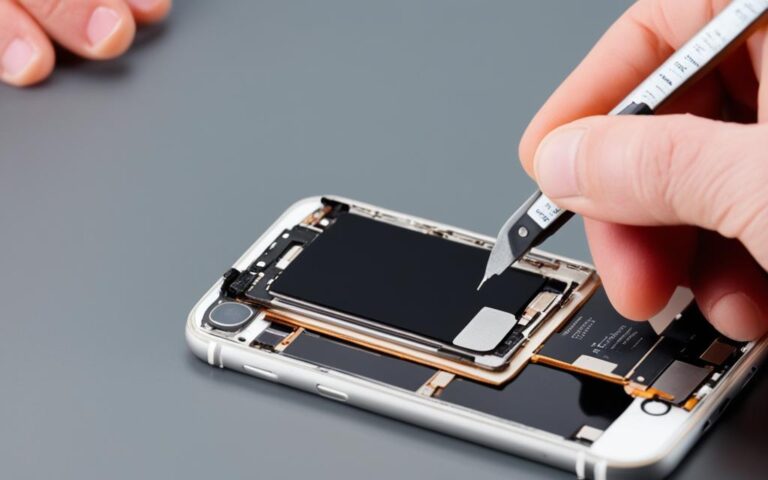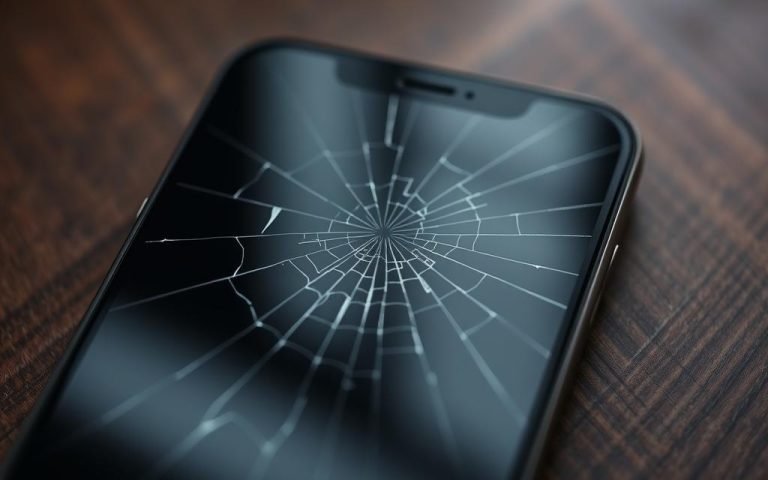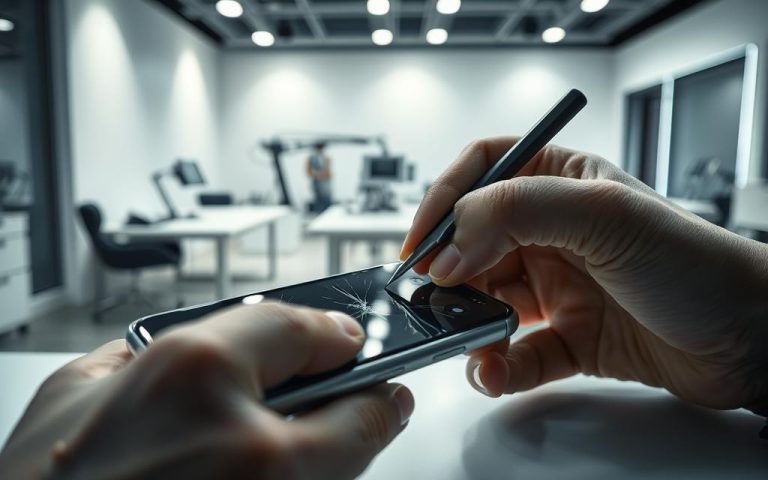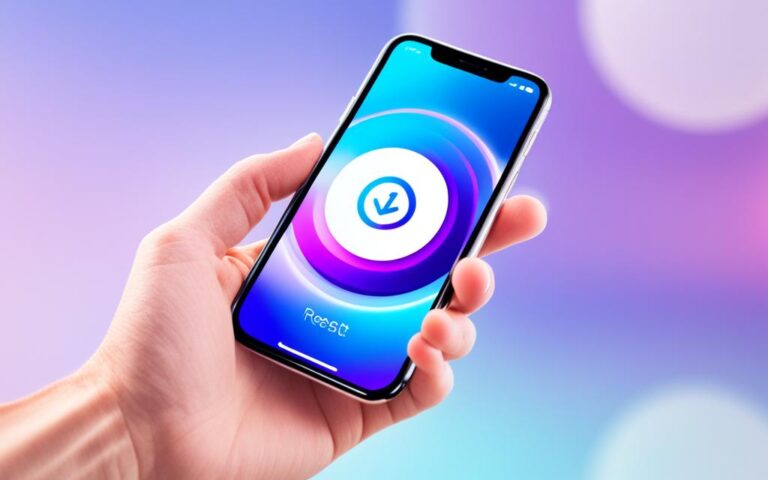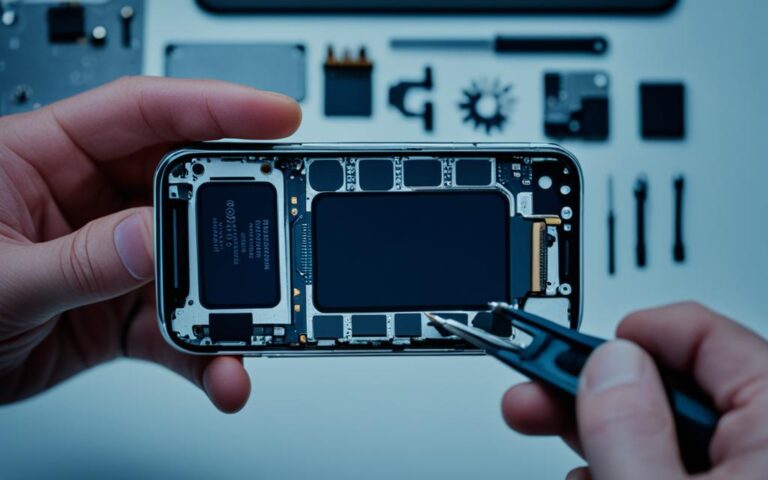Proximity Sensor Fixes for iPhone 12 Pro Max
If you’re experiencing issues with the proximity sensor on your iPhone 12 Pro Max, you’re not alone. Many users have reported problems with the sensor not working correctly, which can be frustrating during phone calls and impact battery performance. Thankfully, there are simple fixes you can try to resolve proximity sensor issues and restore optimal functionality to your device.
In this article, we will explore the common proximity sensor issues faced by iPhone 12 Pro Max users and provide effective solutions to fix them. Whether it’s a software glitch or a physical obstruction, we’ve got you covered.
Let’s dive in and learn how to troubleshoot and fix proximity sensor issues on your iPhone 12 Pro Max.
Before we begin, let’s take a closer look at what the proximity sensor does and why it is indispensable for your iPhone 12 Pro Max.
Understanding the Proximity Sensor
The proximity sensor is a built-in feature in every generation of iPhone, including the iPhone 12 Pro Max. It plays a vital role in enhancing the user experience by detecting the presence of an object near the screen, especially when you hold the phone up to your ear during a call.
The function of the proximity sensor is to save battery power by automatically turning off the screen when it detects that the phone is close to your face. This not only conserves battery life but also prevents accidental button presses that could disrupt your call or activate features unintentionally.
By understanding how the proximity sensor works, you can effectively troubleshoot any issues that may arise with its functionality.
When you bring your iPhone close to your ear during a call, the proximity sensor emits infrared light. If there is an object nearby, such as your ear or a Bluetooth earpiece, the light will be reflected back to the sensor. The sensor then interprets this reflection as the presence of an object and triggers the necessary actions accordingly.
The importance of the proximity sensor cannot be overstated, as it directly impacts your phone’s performance and user experience. Without a properly functioning proximity sensor, your screen may not turn off during calls, leading to accidental button presses and decreased battery life.
Moreover, the proximity sensor also prevents unintentional screen activation during a call, ensuring that your conversation remains uninterrupted. This feature is particularly useful when using apps or features that rely on close proximity to the sensor, such as Breathe, an app that promotes mindfulness and relaxation.
The proximity sensor is an essential component of iPhone’s design and functionality, contributing to its overall user-friendly experience. Now that we have a clear understanding of the proximity sensor’s function and importance, let’s explore common issues that users may face and how to address them effectively.
Common Proximity Sensor Issues
Many iPhone users have reported various issues with the proximity sensor. These include the sensor not working after a screen replacement, the screen not turning off during a call, the screen staying black even after the call ends, and the sensor being too sensitive. These issues can arise from physical obstructions, software glitches, or other factors. Identifying these common issues is the first step towards finding a suitable fix.
Examples of Common Proximity Sensor Issues:
- Proximity sensor not working after a screen replacement
- Screen not turning off during a call
- Screen staying black even after the call ends
- Sensor being too sensitive
These proximity sensor glitches can be frustrating and inconvenient, but they can often be resolved with the right troubleshooting steps.
“The proximity sensor not working can be caused by physical obstructions or software glitches. It’s important to identify and address these issues to ensure proper functionality.” – Apple Support
When faced with proximity sensor issues, it’s important to determine the underlying cause and implement the appropriate solutions. In the next section, we will explore quick fixes using ReiBoot – iOS System Repair and traditional methods to resolve these problems effectively.
Quick Fix with ReiBoot
If you’re experiencing issues with the proximity sensor on your iPhone 12 Pro Max, there’s a powerful tool that can help you fix the problem: ReiBoot – iOS System Repair. Whether you’re facing proximity sensor malfunctions or other iOS-related problems, ReiBoot can address them all. This software provides a quick and effective solution to fix your iPhone’s proximity sensor without any data loss.
ReiBoot offers a user-friendly interface and simple steps to guide you through the repair process. Here’s how you can use ReiBoot to fix your iPhone’s proximity sensor:
- Download and install ReiBoot on your computer.
- Connect your iPhone 12 Pro Max to the computer using a USB cable.
- Launch ReiBoot and click on the “Repair Operating System” feature.
- Click “Fix Now” and follow the on-screen instructions to download the necessary firmware package.
- Once the firmware package is downloaded, click “Start Repair” to begin fixing the proximity sensor.
- Wait for the repair process to complete, and your iPhone’s proximity sensor should be working properly again.
With ReiBoot’s iOS System Repair, you don’t have to worry about complicated troubleshooting or data loss. It’s a reliable and efficient solution for fixing iPhone proximity issues.
Remember to regularly update your iOS software and keep your device clean to prevent any potential obstructions that might affect the proximity sensor. By using ReiBoot, you can ensure that your iPhone 12 Pro Max’s proximity sensor functions optimally, allowing you to enjoy uninterrupted calls and a seamless user experience.
Traditional Fixes for Proximity Sensor Issues
Apart from using specialized software like ReiBoot, there are traditional methods you can try to fix proximity sensor issues on your iPhone. These methods include:
- Removing any screen protectors or cases that may be obstructing the sensor.
- Performing a force restart to refresh the system.
- Updating your iOS software to ensure compatibility and bug fixes.
Let’s take a closer look at each of these traditional fixes:
1. Remove Screen Protector
If you have a screen protector on your iPhone, it’s possible that it is interfering with the proximity sensor. Screen protectors, especially those made with thick or non-transparent materials, can obstruct the sensor’s functionality. Try removing the screen protector and see if the proximity sensor starts working as expected.
2. Force Restart iPhone
A force restart can help resolve minor software glitches that could be affecting the proximity sensor. To force restart your iPhone, follow these steps:
- For iPhone 8 or later: Quickly press and release the volume up button, then quickly press and release the volume down button. Finally, press and hold the side button until you see the Apple logo.
- For iPhone 7 or iPhone 7 Plus: Press and hold the volume down button and the side button together until the Apple logo appears.
- For iPhone 6s or earlier, iPad, or iPod touch: Press and hold the home button and the top or side button (depending on the model) together until the Apple logo appears.
3. Update iOS
Keeping your iOS software up to date is crucial for optimal performance and compatibility with various features, including the proximity sensor. To update your iOS, follow these steps:
- Connect your iPhone to a stable Wi-Fi network.
- Go to Settings → General → Software Update.
- If an update is available, tap Download and Install.
- Follow the on-screen instructions to complete the update.
Regularly updating your iOS software ensures that any known bugs or issues related to the proximity sensor are addressed by Apple.
By trying these traditional fixes, you can often resolve common proximity sensor problems on your iPhone. However, if the issue persists, it may be necessary to consider seeking professional help or exploring more advanced troubleshooting methods.
Factory Reset as the Last Resort
If all else fails and your iPhone’s proximity sensor is still not functioning correctly, a factory reset may be necessary. However, it’s important to note that a factory reset will erase all data on your device, so it should be considered as a last resort. Before proceeding with a factory reset, make sure to back up your data to prevent any loss of important information.
| Advantages of Factory Reset | Disadvantages of Factory Reset |
|---|---|
|
|
Performing a factory reset on your iPhone can be an effective solution when other troubleshooting methods have been unsuccessful. It allows you to reset your device’s settings and restore it to its default configuration, which can often resolve proximity sensor issues.
However, it’s crucial to keep in mind that a factory reset erases all data, so it’s essential to back up your iPhone before proceeding. This ensures that you don’t lose any important files, photos, or contacts.
To perform a factory reset on your iPhone, follow these steps:
- Go to the Settings app on your iPhone.
- Tap on “General.”
- Scroll down and select “Reset.”
- Choose “Erase All Content and Settings.”
- Enter your passcode if prompted.
- Confirm the factory reset by tapping “Erase iPhone.”
Once the factory reset process is complete, your iPhone will restart and be restored to its original settings. You can then set up your device as new or restore from a backup.
Seeking Professional Help
If you have tried all the suggested fixes and your iPhone’s proximity sensor is still malfunctioning, it may be time to seek professional help. Apple Support offers various service options to assist you in resolving any hardware or software issues related to your iPhone’s proximity sensor. Whether you prefer contacting their support team or visiting a Genius Bar at an Apple Store, you can rely on their expertise to diagnose and repair the problem.
Apple Support provides comprehensive iPhone support, ensuring that you receive the highest quality assistance. Their knowledgeable technicians are trained to handle a wide range of issues, including proximity sensor malfunctions. They can guide you through the troubleshooting process, offer personalized solutions, and provide valuable advice to address any concerns you may have.
Visiting a Genius Bar at an Apple Store is a convenient option for those who prefer face-to-face interaction. The Genius Bar is a dedicated support station where you can receive expert assistance from Apple’s team of professionals. They will evaluate your iPhone, diagnose the proximity sensor issue, and recommend appropriate solutions to restore its functionality.
Apple’s commitment to customer satisfaction extends to their professional iPhone repair services. If your iPhone requires advanced repairs, their authorized service providers have the necessary expertise and genuine Apple parts to ensure a high-quality repair. By entrusting your device to these professionals, you can have peace of mind knowing that your iPhone will be handled with care and restored to its optimal performance.
Benefits of Seeking Professional Help:
- Expert assistance from highly trained technicians
- Access to personalized solutions
- Valuable advice for troubleshooting
- Convenient face-to-face support at Apple Stores
- High-quality repairs using genuine Apple parts
Remember, when it comes to your iPhone’s proximity sensor, professional help can save you time, effort, and ensure the best possible outcome. Don’t hesitate to reach out to Apple Support or visit a Genius Bar for professional iPhone repair. They are dedicated to assisting you in resolving any issues and providing you with the exceptional support experience you expect from Apple.
Conclusion
Maintaining a properly functioning proximity sensor on your iPhone 12 Pro Max is crucial for an optimal user experience. By troubleshooting proximity sensor issues and following the suggested fixes, you can ensure that your device performs at its best. Remember to regularly update your iOS software and keep your phone and case clean to avoid any potential obstructions that may affect the sensor’s functionality.
If you encounter persistent problems with your iPhone’s proximity sensor, don’t hesitate to seek professional help. Apple Support provides expert assistance and offers service options that can address hardware or software issues related to the proximity sensor. They can guide you in finding a suitable solution to restore your iPhone’s performance.
By maintaining a functioning proximity sensor, you can enjoy uninterrupted phone calls, save battery power, and have an overall seamless experience with your iPhone 12 Pro Max. Troubleshooting and resolving proximity sensor issues will ensure optimal performance for your device, enhancing your daily usage and satisfaction.
FAQ
What is the proximity sensor in the iPhone 12 Pro Max?
The proximity sensor is a built-in feature in every generation of iPhone, including the iPhone 12 Pro Max. It detects the presence of an object near the screen, particularly when you hold the phone up to your ear during a call. The sensor helps save battery by automatically turning off the screen and preventing accidental button presses.
What are some common issues with the proximity sensor on the iPhone 12 Pro Max?
Many iPhone users have reported various issues with the proximity sensor. These include the sensor not working after a screen replacement, the screen not turning off during a call, the screen staying black even after the call ends, and the sensor being too sensitive. These issues can arise from physical obstructions, software glitches, or other factors.
How can I fix proximity sensor issues on my iPhone 12 Pro Max?
There are several steps you can take to fix proximity sensor issues on your iPhone. You can remove any screen protectors or cases that may be obstructing the sensor, perform a force restart to refresh the system, and update your iOS software to ensure compatibility and bug fixes. If these traditional methods do not work, you can also use specialized software like ReiBoot – iOS System Repair to fix the proximity sensor.
What is ReiBoot – iOS System Repair, and how can it help fix proximity sensor issues?
ReiBoot – iOS System Repair is a powerful tool that can address a wide range of iOS-related problems, including proximity sensor malfunctions. By following the simple steps provided by ReiBoot, you can repair your iPhone’s proximity sensor without losing any data.
Can a factory reset fix proximity sensor issues?
If all else fails and your iPhone’s proximity sensor is still not functioning correctly, a factory reset may be necessary. However, it’s important to note that a factory reset will erase all data on your device, so it should be considered as a last resort. Before proceeding with a factory reset, make sure to back up your data to prevent any loss of important information.
What should I do if none of the suggested fixes work?
If you have tried all the suggested fixes and your iPhone’s proximity sensor is still malfunctioning, it may be time to seek professional help. Apple Support offers various service options, including contacting their support team or visiting a Genius Bar at an Apple Store. They can provide expert assistance and advice to resolve any hardware or software issues related to your iPhone’s proximity sensor.
How important is maintaining a properly functioning proximity sensor?
Maintaining a properly functioning proximity sensor on your iPhone 12 Pro Max is essential for a seamless user experience. By following the suggested fixes and seeking professional help when needed, you can troubleshoot any proximity sensor issues and restore your device’s performance. Remember to regularly update your iOS software and keep your phone and case clean to prevent any potential obstructions.
